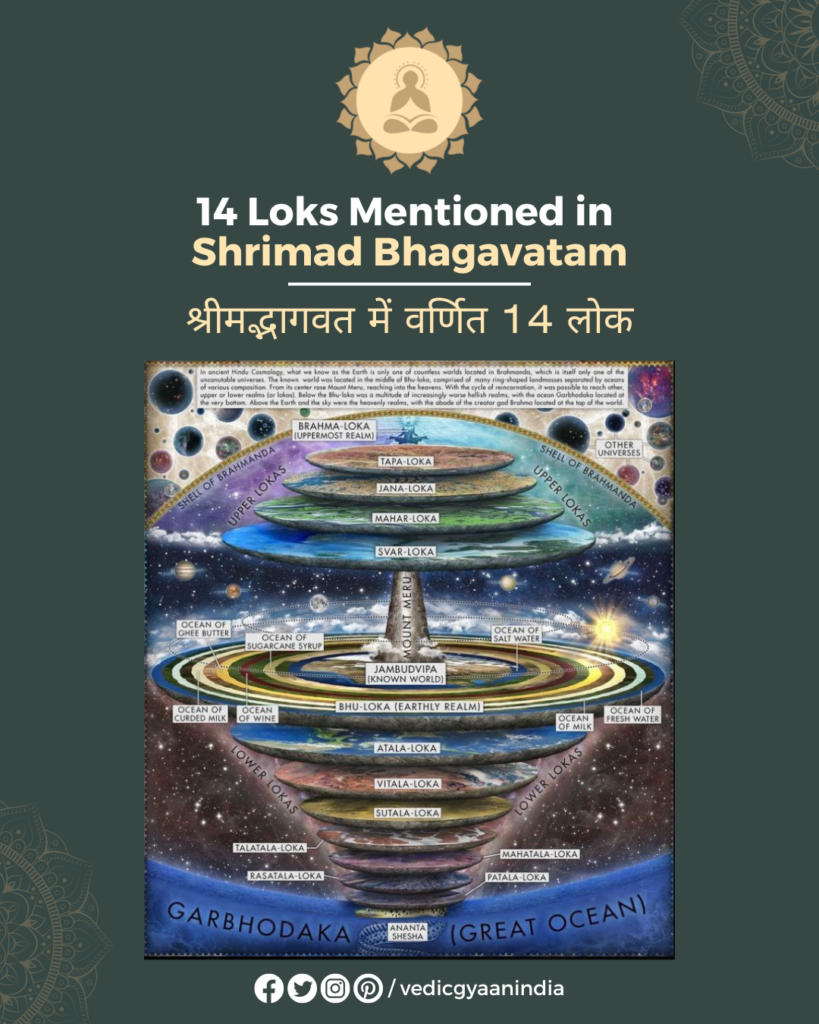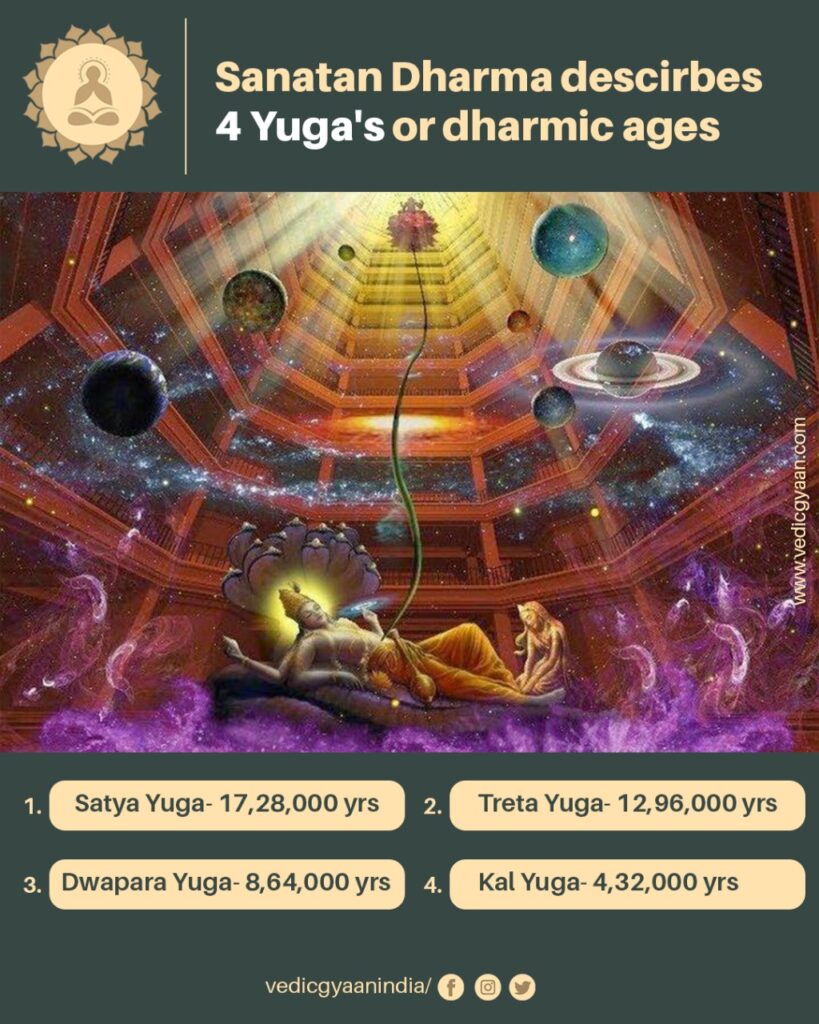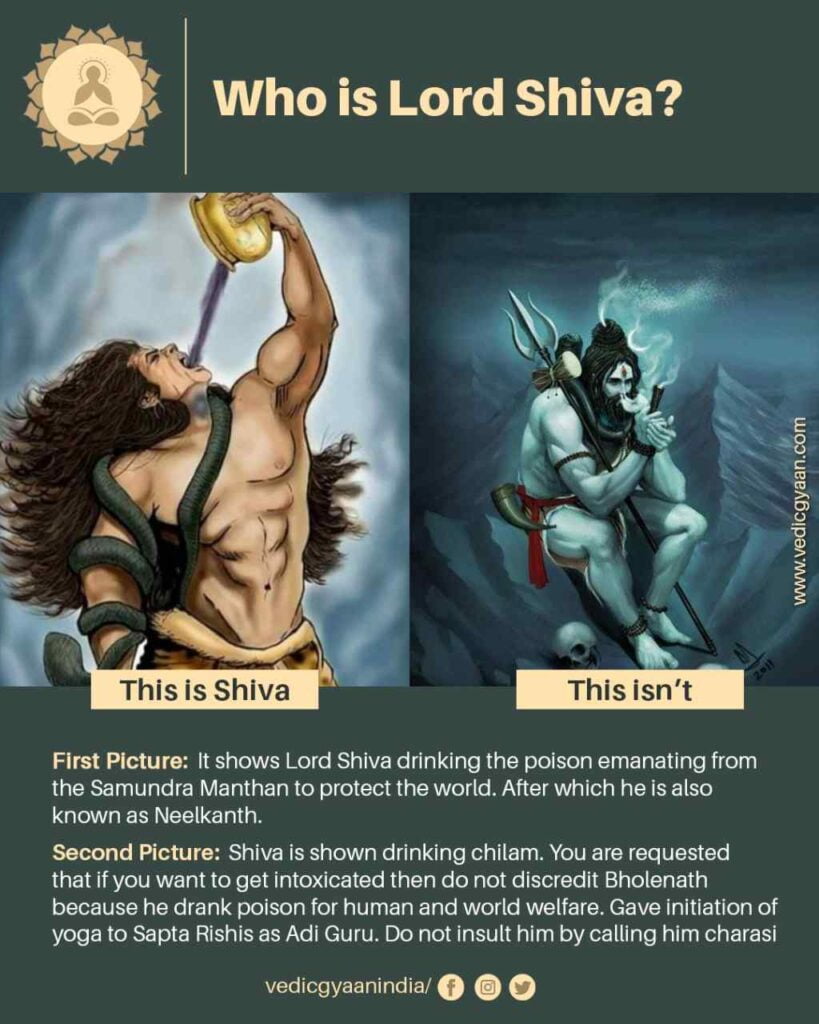Shrimad Bhagavatam has a wild and intriguing concept of cosmology that might seem untrue but has more to its existence than we ever tried to understand. The human thirst for understanding the universe and humanity’s place within it is a natural curiosity. In contemporary times, scientists rely on advanced telescopes and intricate computers to develop cosmological theories.
In contrast, our Rishi Munis sought knowledge from the ancient scriptures. Followers of the Vedic Sanskriti acquired insights about the cosmos from scriptures such as the Srimad-Bhagavatam, also known as the Bhagavata Purana. Yet, the descriptions of the universe within Shrimad Bhagavatam often puzzle new-aged scholars.
Vedic Universe

The Srimad-Bhagavatam introduces a cosmological model centred around the Earth. While the initial impression of this cosmology might seem unfamiliar, upon deeper examination, it becomes evident that the Bhagavatam’s portrayal captures the world as we perceive it but offers a more extensive and comprehensive depiction of the cosmos.
Learning about the universe and lokas is vital to understanding the creator Lord Vishnu and the first created being of the universe, Brahma.
Bhagwan Vishnu set the ideology of creating a universe, and Bhagwan Brahma initialized the creation of living beings. Every being created by Bhagwan Brahma follows the natural laws and norms suggested by Bhagwan Vishnu.
Bhagwan Brahma resides in the Brahma Lok, where time works differently than Earth (Bhu-Lok). If you know the concept of time dilation, you will understand. However, if you are uncertain about time dilation, we will try to make it easy for your understanding.
Bhagwan Brahma’s lifespan is relatively brief, encompassing a mere 100 years. However, these 100 years equate to a staggering expanse of 333 trillion years within the context of the human race. Each day experienced by Brahma corresponds to approximately 4.32 billion years in human terms. This period is equivalent to 1,000 cycles of kalpas, known as yugas.
Also Read: 4 Yugas in Sanatan Dharma and Chakra Science : Understanding 7 Chakras
In the Bhagavad Gita, a concise portrayal of Brahma and his pivotal role in the evolution of the universe:
sahasra-yuga-paryantam ahar yad brahmaṇo viduḥ
rātriṁ yuga-sahasrāntāṁ te ’ho-rātra-vido janāḥ
avyaktād vyaktayaḥ sarvāḥ prabhavanty ahar-āgame
rātry-āgame pralīyante tatraivāvyakta-saṁjñake
bhūta-grāmaḥ sa evāyaṁ bhūtvā bhūtvā pralīyate
rātry-āgame ’vaśaḥ pārtha prabhavaty ahar-āgame
(Bhagavat Gita : 8.17-8.19)
“From a human perspective, the accumulation of a thousand ages constitutes the length of one day within Brahma’s existence, and equivalently, that duration characterizes his night as well. As a new day of Brahma commences, all living entities manifest from a state of unmanifestation. Subsequently, as the night falls, they are once again absorbed into the unmanifest state. This cyclical process repeats, wherein the advent of a new day of Brahma marks the emergence of all living beings, and upon the arrival of Brahma’s night, they undergo an involuntary dissolution.”
14 Lokas: Sub-Planes of Our Universe
Shrimad Bhagavatam describes the creation of the universe into 14 Lokas (mentioned in the fifth skandha of Shrimad Bhagavatam). Also, it describes different universes similar to the ones we have. According to the textual scripture, each brahmand lies within a universal shell divided into 14 Lokas. These 14 Lokas exist, with Jambudwipa in the centre (known world) having Bhu-Lok (Earth). Further, Mount Sumeru represents the axis that connects Jambudwipa with six upper heavenly dimensions going to the top-most Loka, i.e. Satya Lok (Brahma Lok).
Below Bhu-lok, we have seven other Loks extending to the bottom-most Lok, i.e. Patala Lok. After Patala Lok lies Garbhodak (Great Ocean) and Ananta Shesha carrying the weights of the universe.
Satya-loka: This realm signifies the domain of Brahma and other elevated celestial beings.
Tapa-loka: Found just beneath Satya-loka, Tapa-loka is the abode of perfected yogis.
Jana-loka: In this realm lives the progeny of Brahma, who are renowned sages.
Mahar-loka: Situated below Jana-loka, Mahar-loka is a dwelling for great sages, mystics, and religious teachers. Inhabitants of this plane periodically descend to Earth to impart vedic principles.
Svar-loka: Also referred to as Svarga, Svar-loka has devatas, or demi-gods, who oversee administrative functions within the solar system. This region encompasses numerous planets, and its inhabitants enjoy life far more delightful than Earth’s wealthiest individuals.
Bhuvar-loka: This plane accommodates departed spirits lacking the merits for entrance into the heavenly realm of Svar-loka. Nevertheless, Bhuvar-loka surpasses the terrestrial Bhur-loka (Earth and its counterparts), resulting in less suffering for virtuous souls born there.
Bhur-loka: Encompassing our Earth and similar worlds, this is the plane of our existence.
Atala-loka: Atala, positioned just below Earth, houses residents encountering heightened sensory pleasures akin to those in Svarga. These inhabitants wield mystic powers and engage in certain forms of dark magic.
Vitala-loka: Below Atala, Vitala-loka is inhabitant by eerie entities like ghosts.
Sutala-loka and Talatala-loka: These realms beneath Earth experience sensual delights similar to heavenly pleasures.
Mahatala-loka: This plane accommodates snake-like humanoids who excel in crafting potent intoxicants.
Rasatala-loka: Rasatala serves as the dwelling of Daityas, adversaries of the Demi-gods. These powerful beings adhere to the doctrine of “might is right.”
Patala-loka: This lower realm has serpent-like nagas who partake in intoxicating substances surpassing those available on Earth.
Vaikuntha – The Spiritual Sky
A concept of a spiritual universe called Vaikuntha exists beyond the boundaries of our universe. Vaikuntha has a similar arrangement of planets and a diverse array of living beings. However, what distinguishes Vaikuntha is the universal recognition and devoted service to Vishnu, acknowledging Him as the supreme consciousness and the source of all manifested reality.
Unlike the continuous cycle of the material cosmos’s birth and destruction, the Vaikuntha planets endure eternally. Inhabitants of Vaikuntha are exempt from birth, disease, ageing, and death. This contrast underscores the paramount difference between the material and spiritual domains. The matter assumes temporary manifestation only to be subsequently dismantled, whereas the spiritual essence is eternal. The pattern of the cosmic universe’s creation and eventual dissolution mirrors the sequence of creating and dissolving the individual body, which houses the spirit soul.



